Bad rendering of graphics in Okular at higher zoom levels
2
votes
1
answer
1613
views
Once you have inspected the screenshots below, you will see that Okular is significantly worse at rendering my two test files than many other well-known viewers. This is unfortunate, because in Kubuntu, Okular is the natural default viewer.
My questions are as follows
1. Is there anything I can do—e.g. downloading and installing some patches or the like—to improve the rendering in Okular? (The 'Enable Graphics Antialias' and 'Enable Text Antialias' are both already enabled in my Okular.)
2. Why is Okular so much worse at rendering these test files than the other viewers?
**The tests** All the images in this post, for all pdf viewers, were captured using the same size of the capturing region. In order to see what I am talking about, you may have to click on the images and view them in full resolution. **The first test file** The one-page pdf test file in question can be downloaded [here](https://drive.google.com/file/d/1QHnNzo8KnTshYtbulPfWyXH2N1XA-LJL/view?usp=sharing) . It was created using [xournalpp](https://github.com/xournalpp/xournalpp) . Below, I repeat the test with a pdf file created in [Inkscape](https://inkscape.org/) , with similar results. As I said, he 'Enable Graphics Antialias' and 'Enable Text Antialias' are both enabled in my Okular. At 75%, the rendering is mostly fine, although you can see that the left side of the gray square is thinner than the other three, which shouldn't be the case. But real problems start happening when we zoom in, below.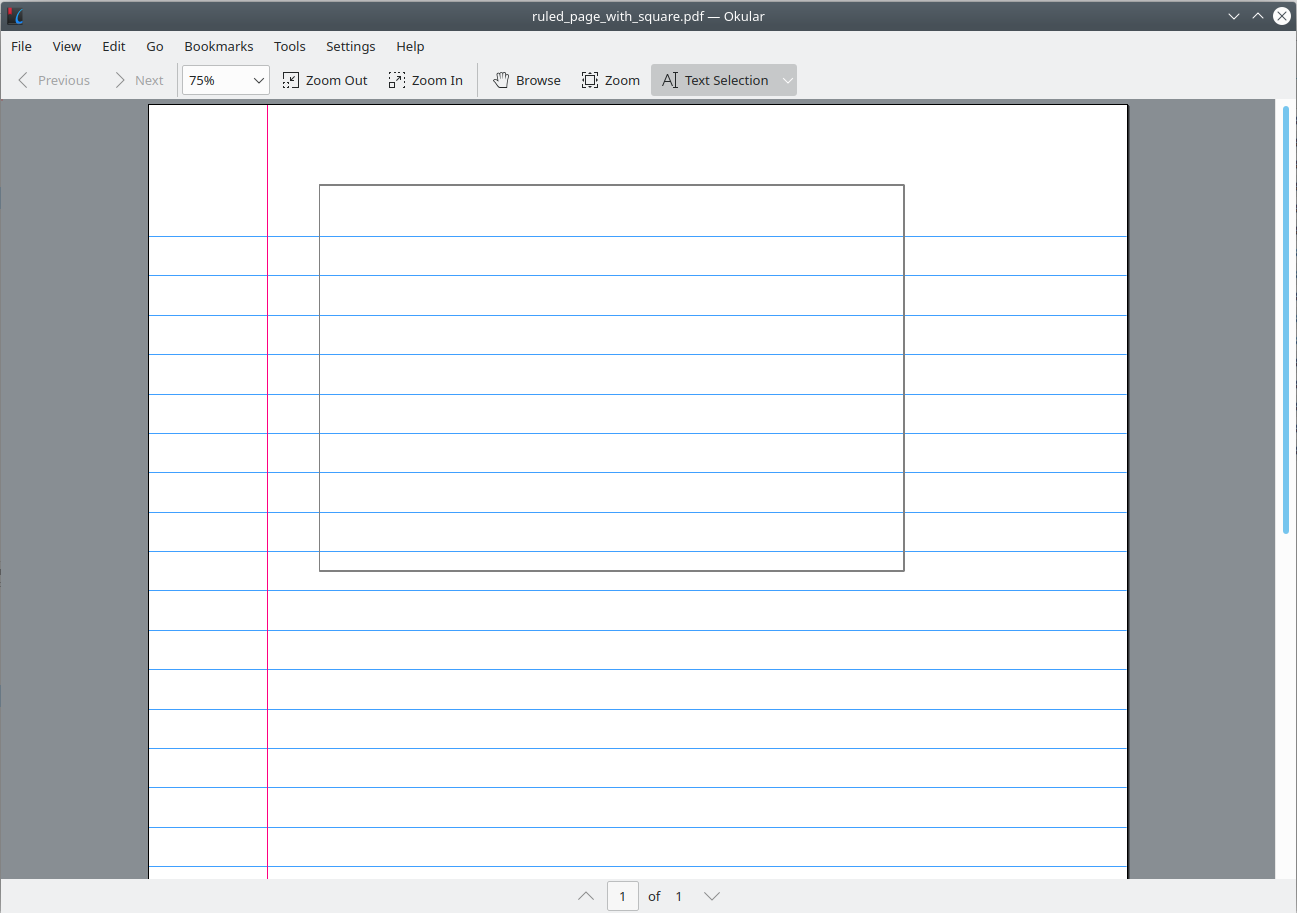 As you can see, some of the blue horizontal lines are rendered as significantly thicker than the others.
As you can see, some of the blue horizontal lines are rendered as significantly thicker than the others.
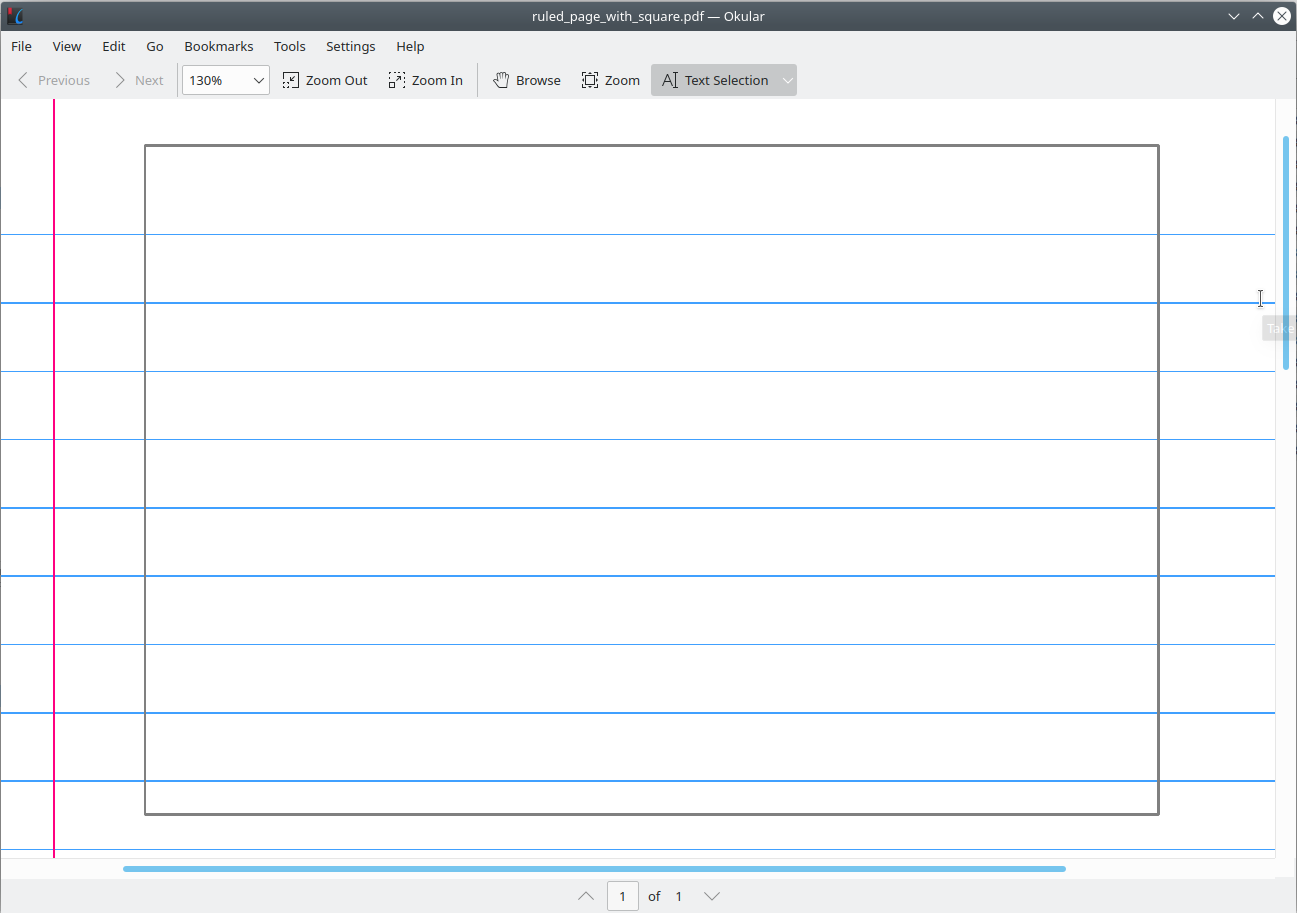 The problem (for this test file) does not affect any other viewers I've tried.
Evince:
The problem (for this test file) does not affect any other viewers I've tried.
Evince:
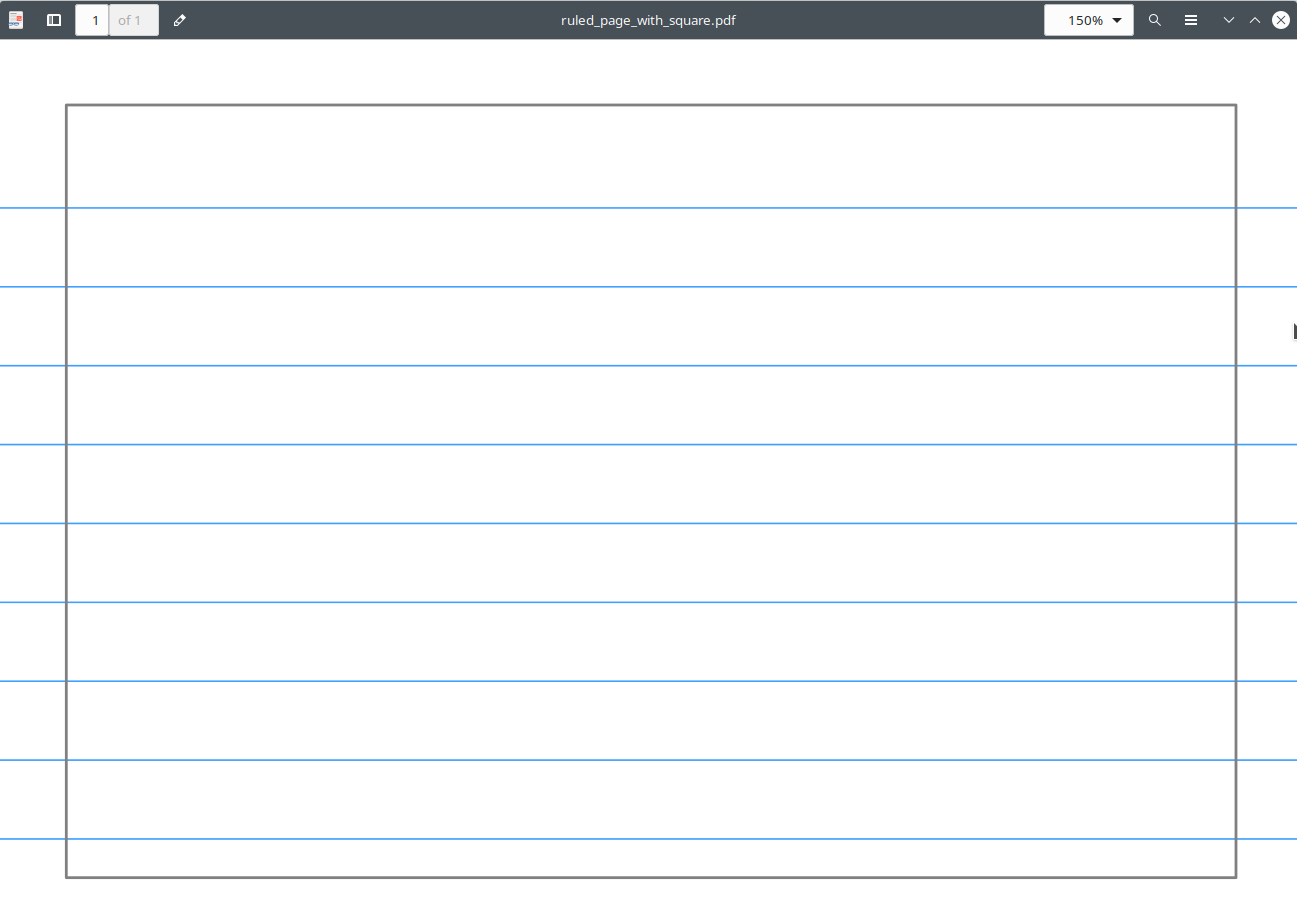 Foxit:
Foxit:
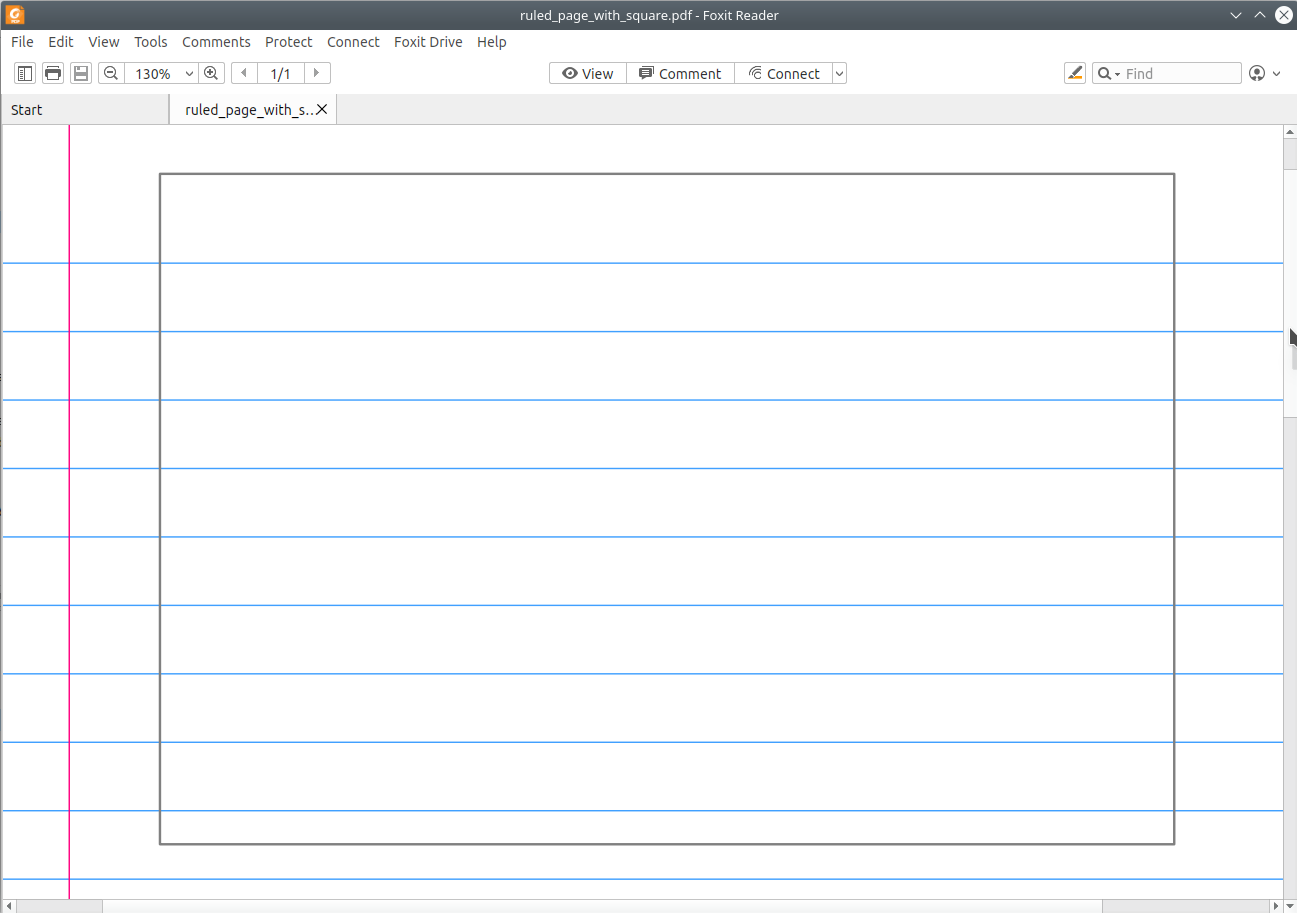 PDF-XChange Editor (through Wine):
PDF-XChange Editor (through Wine):
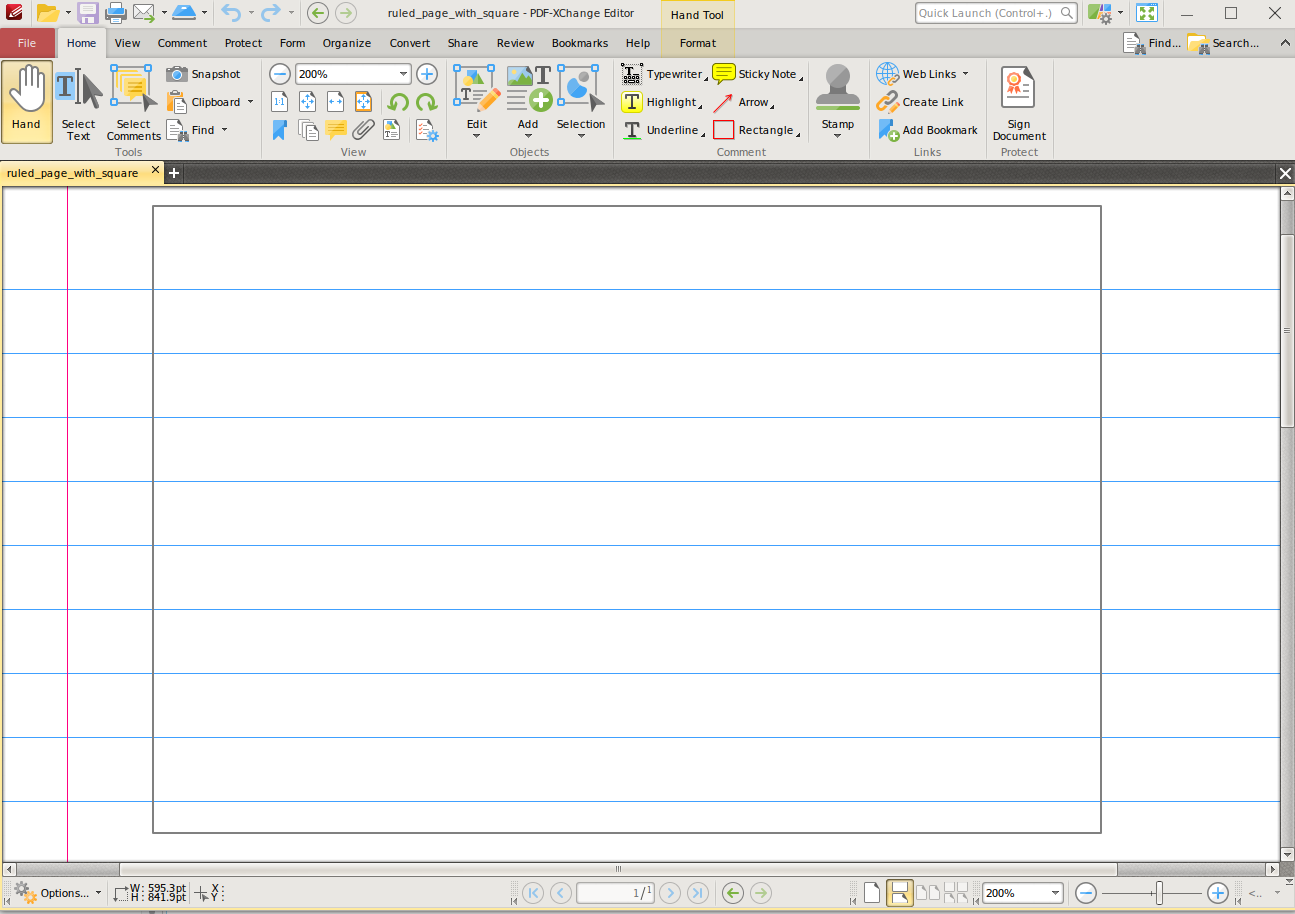 Adobe Acrobat Reader DC (through Wine):
Adobe Acrobat Reader DC (through Wine):
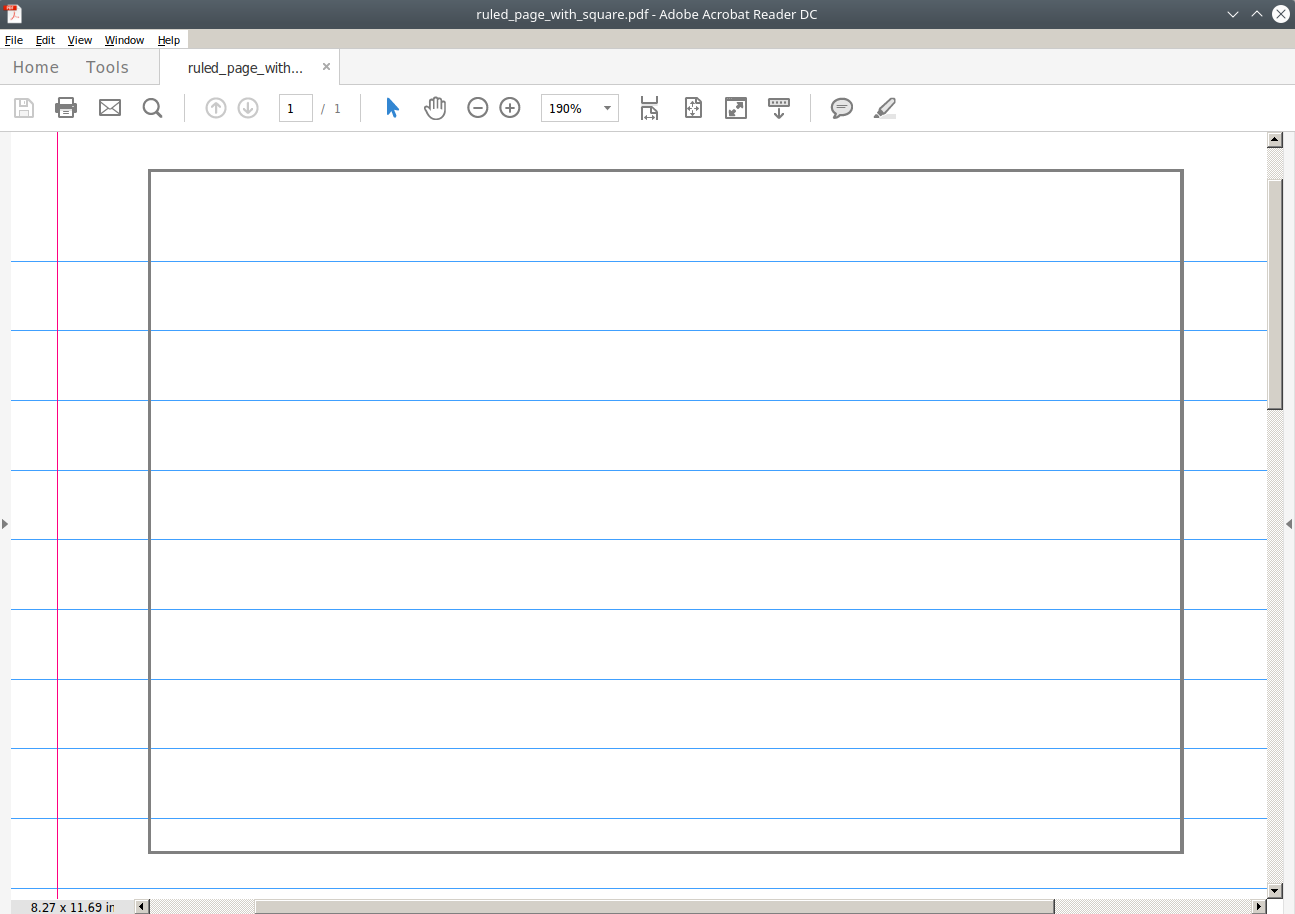
**The second test file** I've tried a different test pdf file, produced in inkscape by copying and pasting the same horizontal line many times (the one-page pdf file in question can be downloaded [here](https://drive.google.com/file/d/1LF4s4M3okuF4FXcp0XWlKsYQhMGegW0Y/view?usp=sharing).) While Okular is still the worst offender, most of the other ones are less than perfect, too: if one plays with different zoom levels, eventually one will hit upon a level where the rendring is off. For this particular file, only with the PDF-XChange Editor have I been unable to find a zoom level where the rendering is off. Okular: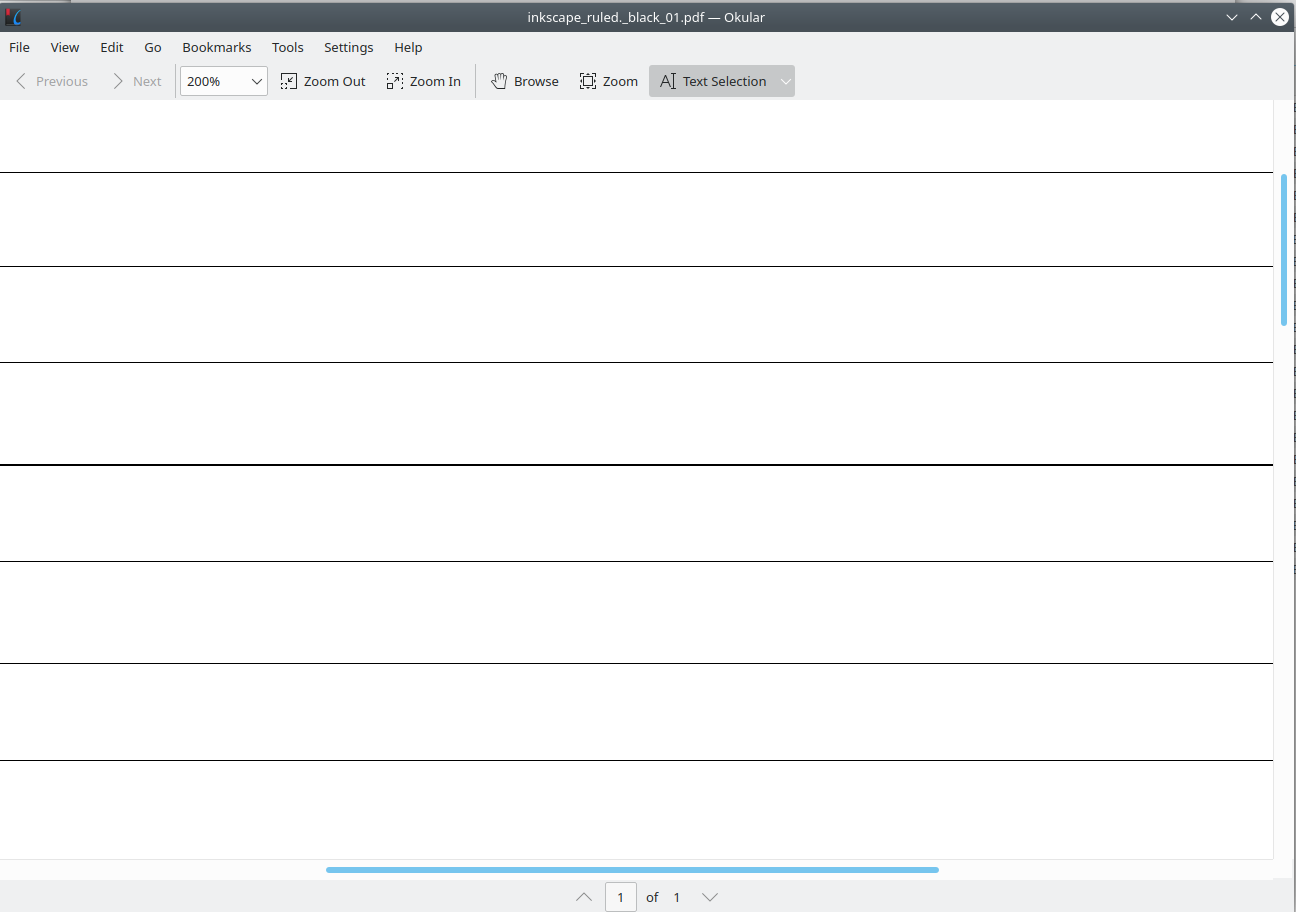 In order to see the imperfections in the rest of these, you really may need to click on the images and view them in full resolution (even if you didn't have to do that for the images above). You should be able to see that some of the lines are rendered thinner than the others.
Evince:
In order to see the imperfections in the rest of these, you really may need to click on the images and view them in full resolution (even if you didn't have to do that for the images above). You should be able to see that some of the lines are rendered thinner than the others.
Evince:
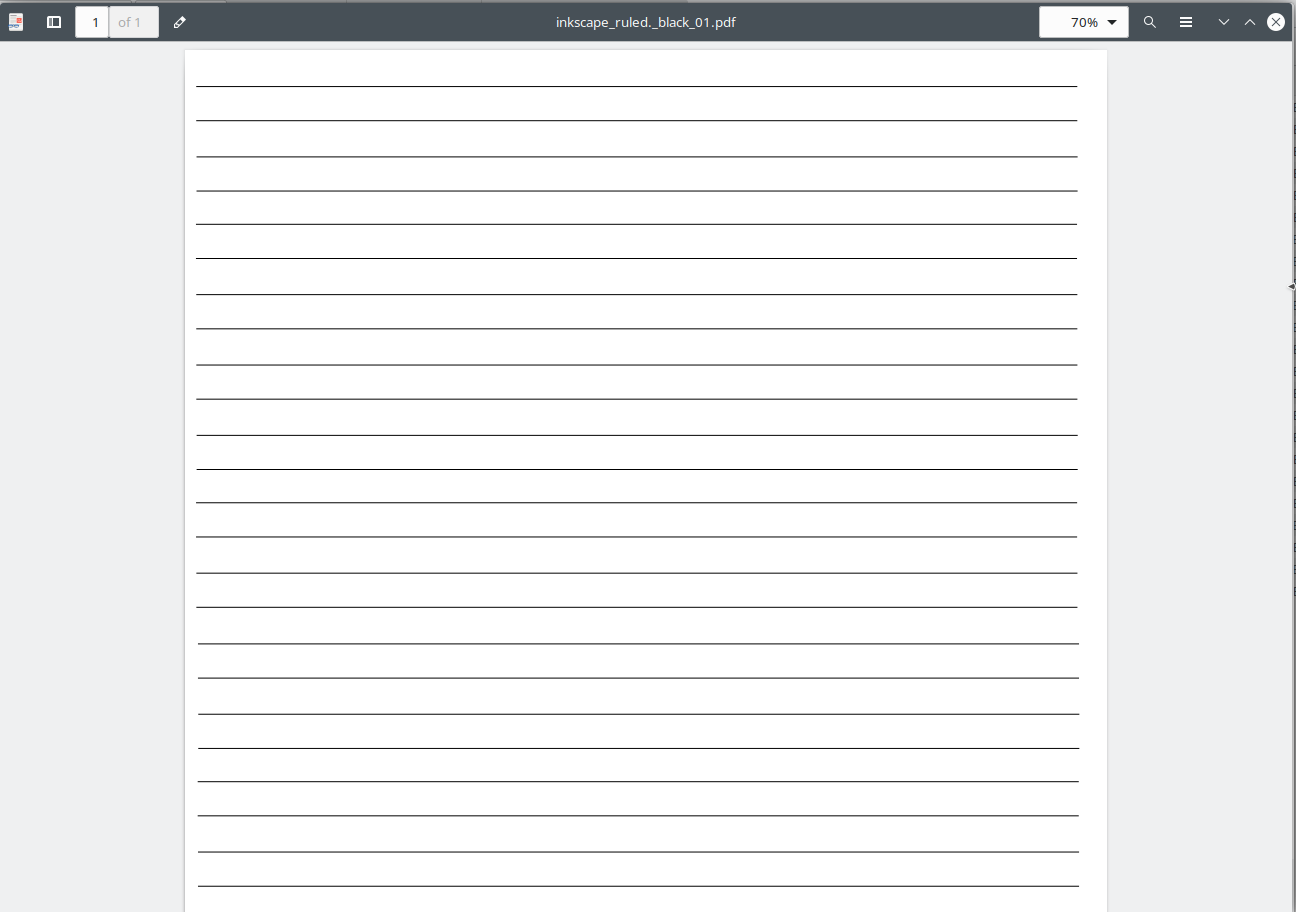 Foxit:
Foxit:
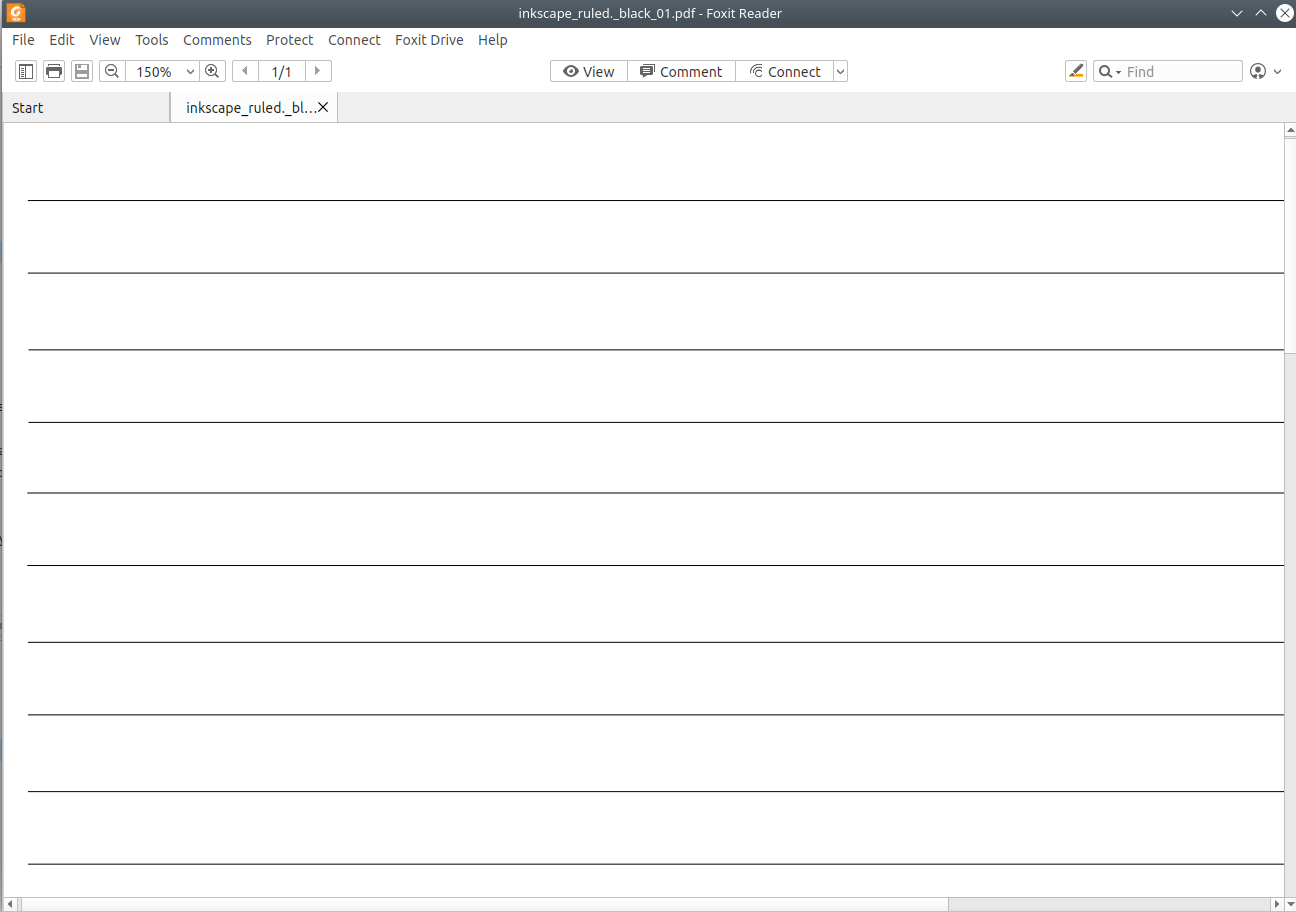 Adobe Acrobat Reader DC:
Adobe Acrobat Reader DC:
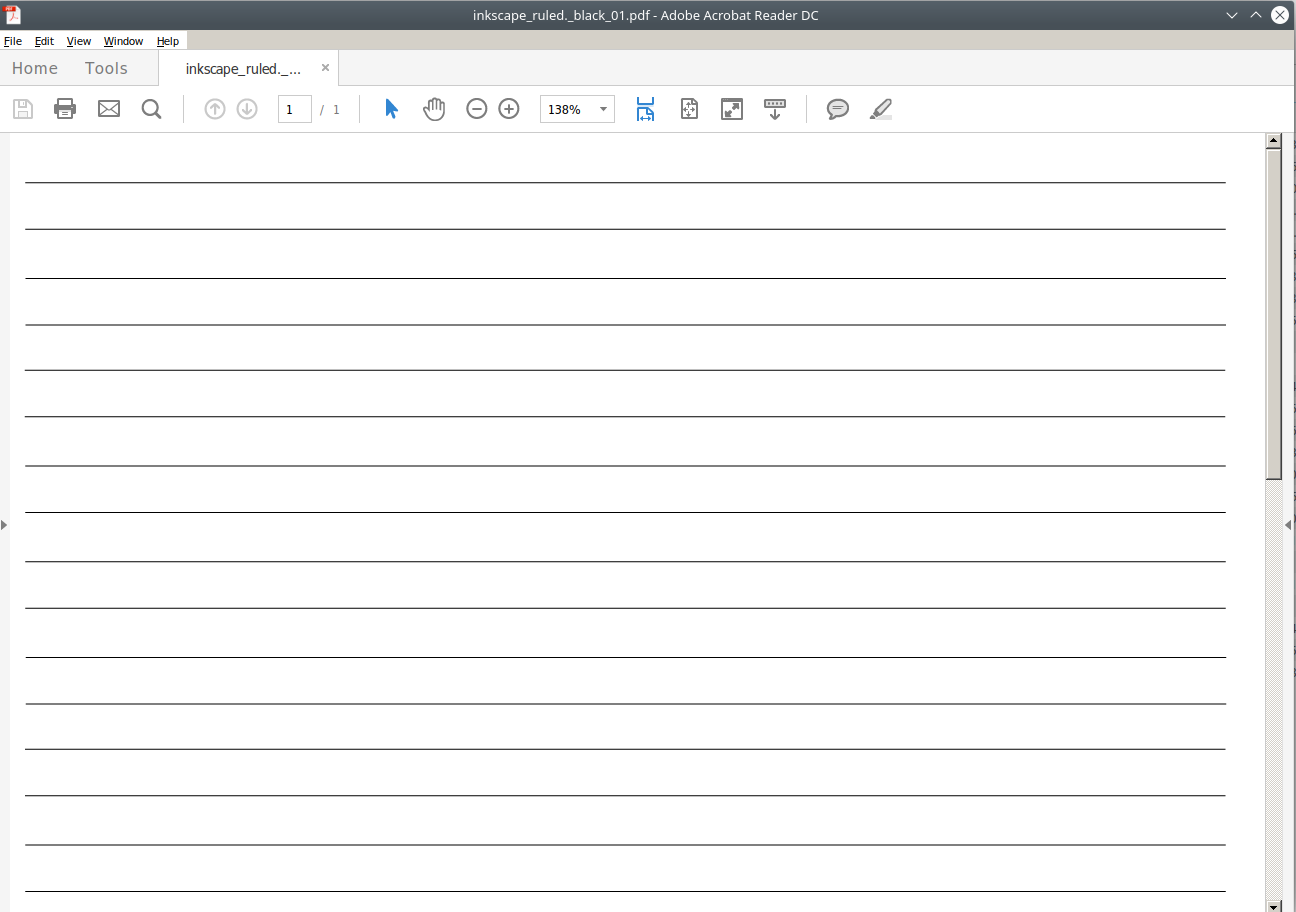 As I said, I was unable to find any imperfections in PDF-XChange Editor's rendering of this file at any zoom level. But it is possible I haven't tried enough zoom levels.
For what it's worth, though it presumably shouldn't matter, here is my system configuration:
As I said, I was unable to find any imperfections in PDF-XChange Editor's rendering of this file at any zoom level. But it is possible I haven't tried enough zoom levels.
For what it's worth, though it presumably shouldn't matter, here is my system configuration:
Laptop model: Dell Latitude 7490.
Operating System: Kubuntu 20.04
KDE Plasma Version: 5.18.5
KDE Frameworks Version: 5.68.0
Qt Version: 5.12.8
Kernel Version: 5.4.0-48-generic
OS Type: 64-bit
Processors: 8 × Intel® Core™ i7-8650U CPU @ 1.90GHz (Graphics: Intel UHD Graphics 620 integrated graphics processor)
Memory: 15.5 GiB of RAM Let me repeat my questions: 1. Is there anything I can do—e.g. downloading and installing some patches or the like—to improve the rendering in Okular? (The 'Enable Graphics Antialias' and 'Enable Text Antialias' are both already enabled in my Okular.) 2. Why is Okular so much worse at rendering these test files than the other viewers?
**The tests** All the images in this post, for all pdf viewers, were captured using the same size of the capturing region. In order to see what I am talking about, you may have to click on the images and view them in full resolution. **The first test file** The one-page pdf test file in question can be downloaded [here](https://drive.google.com/file/d/1QHnNzo8KnTshYtbulPfWyXH2N1XA-LJL/view?usp=sharing) . It was created using [xournalpp](https://github.com/xournalpp/xournalpp) . Below, I repeat the test with a pdf file created in [Inkscape](https://inkscape.org/) , with similar results. As I said, he 'Enable Graphics Antialias' and 'Enable Text Antialias' are both enabled in my Okular. At 75%, the rendering is mostly fine, although you can see that the left side of the gray square is thinner than the other three, which shouldn't be the case. But real problems start happening when we zoom in, below.
 As you can see, some of the blue horizontal lines are rendered as significantly thicker than the others.
As you can see, some of the blue horizontal lines are rendered as significantly thicker than the others.
 The problem (for this test file) does not affect any other viewers I've tried.
Evince:
The problem (for this test file) does not affect any other viewers I've tried.
Evince:
 Foxit:
Foxit:
 PDF-XChange Editor (through Wine):
PDF-XChange Editor (through Wine):
 Adobe Acrobat Reader DC (through Wine):
Adobe Acrobat Reader DC (through Wine):

**The second test file** I've tried a different test pdf file, produced in inkscape by copying and pasting the same horizontal line many times (the one-page pdf file in question can be downloaded [here](https://drive.google.com/file/d/1LF4s4M3okuF4FXcp0XWlKsYQhMGegW0Y/view?usp=sharing).) While Okular is still the worst offender, most of the other ones are less than perfect, too: if one plays with different zoom levels, eventually one will hit upon a level where the rendring is off. For this particular file, only with the PDF-XChange Editor have I been unable to find a zoom level where the rendering is off. Okular:
 In order to see the imperfections in the rest of these, you really may need to click on the images and view them in full resolution (even if you didn't have to do that for the images above). You should be able to see that some of the lines are rendered thinner than the others.
Evince:
In order to see the imperfections in the rest of these, you really may need to click on the images and view them in full resolution (even if you didn't have to do that for the images above). You should be able to see that some of the lines are rendered thinner than the others.
Evince:
 Foxit:
Foxit:
 Adobe Acrobat Reader DC:
Adobe Acrobat Reader DC:
 As I said, I was unable to find any imperfections in PDF-XChange Editor's rendering of this file at any zoom level. But it is possible I haven't tried enough zoom levels.
For what it's worth, though it presumably shouldn't matter, here is my system configuration:
As I said, I was unable to find any imperfections in PDF-XChange Editor's rendering of this file at any zoom level. But it is possible I haven't tried enough zoom levels.
For what it's worth, though it presumably shouldn't matter, here is my system configuration:
Laptop model: Dell Latitude 7490.
Operating System: Kubuntu 20.04
KDE Plasma Version: 5.18.5
KDE Frameworks Version: 5.68.0
Qt Version: 5.12.8
Kernel Version: 5.4.0-48-generic
OS Type: 64-bit
Processors: 8 × Intel® Core™ i7-8650U CPU @ 1.90GHz (Graphics: Intel UHD Graphics 620 integrated graphics processor)
Memory: 15.5 GiB of RAM Let me repeat my questions: 1. Is there anything I can do—e.g. downloading and installing some patches or the like—to improve the rendering in Okular? (The 'Enable Graphics Antialias' and 'Enable Text Antialias' are both already enabled in my Okular.) 2. Why is Okular so much worse at rendering these test files than the other viewers?
Asked by linguisticturn
(171 rep)
Sep 28, 2020, 03:56 AM
Last activity: Feb 24, 2024, 05:53 PM
Last activity: Feb 24, 2024, 05:53 PM